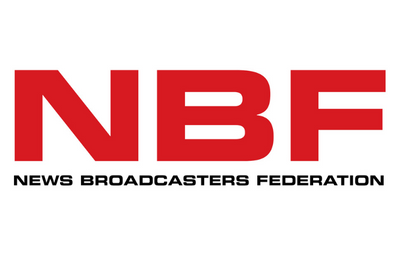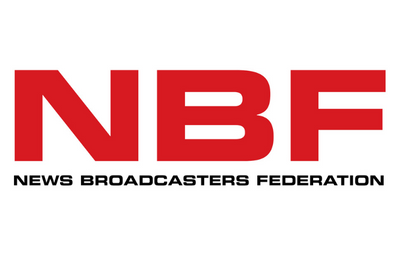
In October 2020, BARC (Broadcast Audience Research Council) decided to suspend news channel ratings. This came about as a result of the TRP scam, where news channels were accused of tampering with BARC’s viewership data for heightened ratings.
Since then there have been several calls from news channel heads for the resumption of BARC's viewership data. Not having data has affected their revenue with advertisers opting out or reducing advertising on these channels.
Starting 2022 on a hopeful note, the Ministry of Information and Broadcasting (MIB) released a directive on 12 January to BARC, requesting them to restore news channel rating reports. The revised order will be a ‘four-week rolling average concept’ covering news and niche genre ratings.
In addition to the legal request by MIB, the NBF (News Broadcasters Federation) held a meeting and released a statement on 13 January 2022 appealing to BARC to resume the ratings due to the repercussions on advertising revenues. However, news channels and advertisers are still wary of this revival coming to fruition.
Campaign India spoke to news channels and subject experts on the news ratings blackout period, challenges encountered, and hopes on restoring the system.
News channels outcry
The essence of BARC’s data on news ratings give media agency affiliates a return on investment, as they get to know if they are paying a fair price for their brands on the channels or not.
According to MK Anand, managing director, CEO, Times Network, his conglomerate of news channels have potentially lost much more revenue due to the alleged fraud before the blackout period. He explained, “This revenue loss took place due to news data published by BARC, in the preceding years rather than due to reduced advertiser interest due to lack of ratings in these past few months.”
Expressing the challenges faced during the blackout time, Anand added, “The suspension was a period in which BARC’s management, news broadcasters and their association NBDA were involved in intense discussions to tighten vigilance, improve processes and design better policies. The absence of data is felt most by us, the paying members who are handicapped are those designing content.”
Conveying the favourable influences of the TRP blackout period, Anand, on a hopeful note, said, "The suffering news channels have endured in this long period has been undertaken to ensure that the new system is tamper-proof and trustworthy."
State elections advertising
News channels are now gearing up for the upcoming State Legislative Assembly general elections coverage which commences on 10 February 2022. This is usually a period when there's heightened advertising interest. But with the lack of BARC data, are news channels going to see a dip in ad spending or an upsurge?
Manoj Jagyasi, chief revenue officer, Zee Media channels, expressed that the network should see a rise in revenue. He said, “All news networks pre-plan big-ticket events like elections. Zee Media network is no exception. Most of the programs are already sold before they hit the airwaves. We plan programs and product integration is seamlessly woven into it which brings great value to the table for our partners. Great content always attracts eyeballs therefore I do not suspect we will have a dip in revenue as this is the season to invest deeply in the genre as elections return after five years.”
Echoing a similar viewpoint, Anand conveyed that there won’t be any significant impact either due to data not being published.
Marketer's quandary
However, Rajiv Dubey, senior general manager, head of media, Dabur India, stated that while interest in the news genre will increase, marketers won't know which channel to run advertisements on because of a lack of numbers.
“An event like elections where the news genre viewership goes up, won’t be received well by advertisers because they won’t know where to invest their money and which channels are on the top. During the state elections, political parties put money behind news channels. They will gain revenues for a while but not in the long term,” he said.
A senior representative of a news channel who didn't want to be named agreed with Dubey. “It will be challenging for advertisers to spend on news channels launched in the market during the absence of ratings. The timing the authorities decided to not reveal news channel ratings coincides with the assembly election rallies. The power of politics also plays a role and its influence to push public opinion. This may be one of the reasons for the holdup even with the clearing from the centre," he said.
Voicing out his challenges, Dubey said, “BARC as an agency can’t continue to keep advertisers in the dark. Ultimately, the news genre will suffer because of this. Advertisers will go with their intuition for a while, but gradually they will start to make money on those channels and genres which give a sure shot rating. This is the age of data. They can’t deny advertisers data and expect them to invest money.”
Change in investments
As per Mansi Datta, chief client officer, head- North and East, Wavemaker India, the news is a significant genre that commands 9-12% of the channel share. She reported, “At an all India level, it became a black box for these last one and a half years. However, this did not stop the news genre from getting investments. Both value and volume for this genre went up in 2021 over last year.”
The increase in value and volume in 2021 can be attributed to understanding advertisers according to Anand.
“This entire argument that ad sales are only dependent on ratings is flawed. The volume of ads as per the Adex, the financial performance of news broadcasters in this period should be checked. There is no reduction in ad spending on the news genre front. Advertisers understand that news genre data due to its alleged corrupt practices by some players was not the best guide to spend their advertising budgets. If anything, the absence of ratings has reduced the shrillness, and the content environment the genre provides has improved.”
Jagyasi shared, “The world of news advertising has already been working without ratings for 15 months now. The clients now see merit through content, audience reaction and innovative product integration and promotion. Safe to say, we have been leveraging all of the mentioned parameters thanks to our legacy of content quality and innovation, hence I don’t see any immediate impact in the next three to four months.”
The lack of data was seen at a time when the nation was grappling with the global pandemic, Covid-19. Datta remarked that news channel investments commanded a significant part of the plan during the challenging times of Covid as viewership was at an all-time high.
Datta shared, “For male-oriented campaigns, the share of news was quite significant in the overall investment mix ranging anywhere between 15-30% of their plans. The investment decisions behind this genre on channel selection were taken based on half-year-old historic data. What also resulted was that the prominent channels got a larger share of the pie versus the long tail channels.”
From a marketing perspective, Dubey shared a different experience, “The biggest challenge has been getting the right information. For the last 15 months, there hasn't been any information about news channels. We have not got the information for the GRP (gross rating point) we have generated for the client, nor the incremental numbers from the news channels which becomes a huge challenge. In the absence of ratings, we had to opt for channels like GEC channels, movie channels and the free to air (FTA) channels.”
A CEO of a news channel added that since the money is coming from the clients, agencies should unite and call for a comeback of audience measurement ratings. His advice is that media agencies should take a stance by not spending on those selective news channels that don’t want the ratings to revive to gain efficacy in their media investments.
Power of data: vital or trivial?
Dubey said, “New channels have been launched in the past year without any data published to understand their audience. We don’t know the pecking order of the channels, the timings that are doing well right now, or how viewership has evolved in the past 15 months. In the last one and half years people have moved on to digital, we don’t know how many have remained in the genre or moved out.”
He added, “The lack of data is not good for the genre. Although the news channels and genre is an important part, in the absence of data, we would gradually move away from the genre if BARC continues to not provide any data. For us, it is important to reach out to the right audiences. It won't be right to keep buying into this medium while being left in the dark.”
Anand approaches data and advertising with a different take. He remarked, “This whole belief that advertisers look only for quantitative parameters is a reductive logic. There are many other and more valuable ways of selecting media for advertising. Just to remind everyone ratings were not stopped for a lark. It was suspended because the majority of paying members of the news genre and their representative NBDA, came to realise that there was a potential violation of process and manipulation of viewership data that was being published by BARC in the preceding period. This led to a breakdown of trust and confidence.”


.jpg&h=334&w=500&q=100&v=20250320&c=1)




.jpg&h=334&w=500&q=100&v=20250320&c=1)


.jpg&h=334&w=500&q=100&v=20250320&c=1)








.jpg&h=268&w=401&q=100&v=20250320&c=1)
